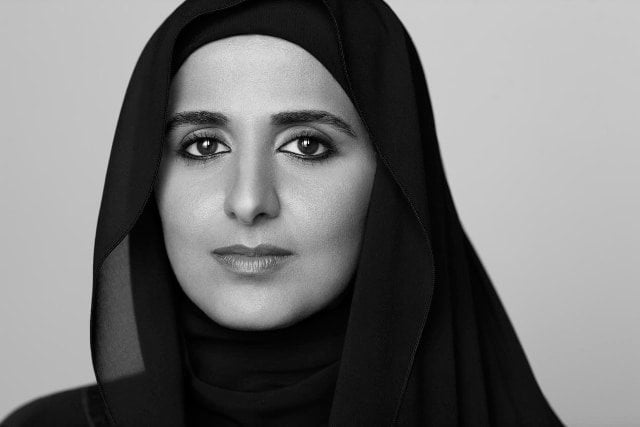
The Museum of Islamic Art (MIA) sits like a majestic guardian on the waterfront in Doha, Qatar. Less prominent, but equally interesting, is Mathaf, the Arab Museum for Modern Art. Then there are Damien Hirst’s 14 monumental bronze sculptures, charting the gestation of a foetus from conception to birth, outside the new Sidra Medical and Research Center. Or the enormous white interlocking discs currently under construction at the southern end of the Corniche: Qatar’s future national museum.
The architect behind the MIA, I. M. Pei, is a Chinese-born American. Both Mathaf and the national museum were designed by French architects, Jean-François Bodin and Jean Nouvel respectively. The art inside the museums – and most galleries in the city – is not Qatari. Regional yes, local no. This is not to say there is nothing Qatari about Qatar’s cultural scene; there is. Or rather there is someone: Sheikha al-Mayassa bint Hamad bin Khalifa al-Thani.
The 32-year-old daughter of Qatar’s previous emir, and sister of the current one, is the undisputed queen of the art scene, and not only in Qatar. With an estimated annual budget of $1 billion to spend on art, Forbes Magazine named her one of the world’s 100 most powerful women of 2015. She chairs the Qatar Museums Authority, which in early 2015 bought a painting by Gauguin for $300 million, believed to be one of the highest prices ever paid for a work of art.
Sheikha al-Mayassa did not study art history; she studied literature and political science in the United States. This seems only logical, since Qatar’s ruling family regards art not just as art, but also – or perhaps primarily – as politics. Soft power through art – the same applies to sport, incidentally – is one of the pillars of the Gulf state’s foreign policy. The objective is to gain prestige and support through means other than military or economic power. Gauguin as a matter of national defence, so to speak.
With sports, the strategy has not (yet) been successful. The 2022 FIFA World Cup has drawn more negative than positive attention, amid allegations of corruption and the exploitation and abuse of migrant workers. Some have even suggested that Qatar is stepping up its focus on art precisely to divert attention from these issues. It remains to be seen whether the tactic will work, however, because the museums still need to be built.
So far, there has been little reason to believe that workers building the museums are better off than those building stadiums or roads. In February 2015, Human Rights Watch (HRW) published a report in which it expressed concerns about outposts of the Guggenheim and Louvre under construction in Abu Dhabi, another major regional art player. There may be laws and codes of conduct, HRW said, but they are only as good as their enforcement.
For now, Qatar’s cultural institutions seem to be quietly getting away with it. In fact, interest in the World Cup and its infrastructural woes has been so intense that other large-scale building projects – like the national museum – have faded from the headlines. The Qatar Museums Authority, including its chairperson, have been silent on the topic.
Sheikha al-Mayassa prefers to focus on the social impact of art. In a TED Talk given in February 2012, she said that art is a very important part of one’s national identity. This is why, she continued, Qatar does not want to have what the West has. “We want to create our own collection.” It is hard to see where Gauguin and Cézanne, another of the royal’s big-ticket acquisitions, fit into this account. Nonetheless, she appeared to be saying that Qatar should serve as a haven for oppressed regional (e.g. Algerian and Iranian) artists.
Noble as this sounds, one might wonder if that haven is as welcoming to local artists. Only if there is true freedom of expression can one develop a national art scene, many artists would argue. And currently, such freedom does not exist in Qatar. Ninar Esber, a Lebanese artist, described the country’s art scene to the New York Times as an “empty golden shell”. It glitters on the outside, she said, but on the inside, it is empty.
So is it just the fine art of oppression that gives the big international – and politically safe – artists a platform but fails the small local ones? If Mohammed al-Ajami is an example in any way, there is cause for concern. In 2011, the Qatari poet wrote a poem called Tunisian Jasmine. “Why,” he wrote, “why do these regimes import everything from the West – everything but the rule of law, that is, and everything but freedom?”
He was sentenced to 15 years in prison for insulting the emir and inciting people to overthrow the ruling regime. So far he has not been given amnesty, something that emir could grant. Either Sheikha al-Mayassa does not have the power to influence her brother, or the patron of Qatar’s artists, filmmakers and storytellers only picks the narratives she likes.


